Related Research Articles

The Sinhala script, also known as Sinhalese script, is a writing system used by the Sinhalese people and most Sri Lankans in Sri Lanka and elsewhere to write the Sinhala language as well as the liturgical languages Pali and Sanskrit. The Sinhalese Akṣara Mālāva, one of the Brahmic scripts, is a descendant of the Ancient Indian Brahmi script. It is also related to the Grantha script.
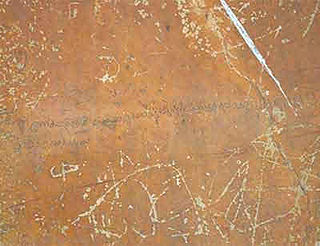
Sinhala, sometimes called Sinhalese, is an Indo-Aryan language primarily spoken by the Sinhalese people of Sri Lanka, who make up the largest ethnic group on the island, numbering about 16 million. Sinhala is also spoken as the first language by other ethnic groups in Sri Lanka, totalling about 2 million speakers as of 2001. It is written using the Sinhala script, which is a Brahmic script closely related to the Grantha script of South India.
Lanka Linux User Group, also known as LK-LUG, is an organization in Sri Lanka for promoting free software. Since its beginnings in 1998 with 40 members, hundreds of Linux enthusiasts from several countries have joined.
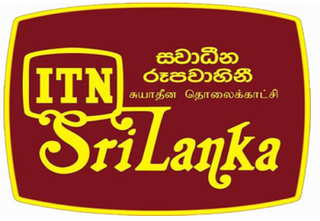
Independent Television Network Ltd also known as ITN Ltd or simply as ITN is a Sri Lankan state-governed television and radio broadcaster located in Wickramasinghepura, Battaramulla, Sri Lanka. It is a Shrama Abhimani Award winner , broadcasts content to a wide demographic within Sri Lanka as well as the expatriate community. The programmes are broadcast in three languages: Sinhala, Tamil, and English. The ITN broadcast coverage extends to 99% of the island of Sri Lanka.

The Nayaks of Kandy were the rulers of the Kingdom of Kandy between 1739 and 1815, and the last dynasty to rule on the island. The term Nayak is derived from the Sanskrit word Nāyaka. Their rise to power came about as a result of the death of Vira Narendrasinha, who left no legitimate heir- the throne passed to his brother-in-law, who was crowned as Sri Vijaya Rajasinha in 1739. They were of Telugu Balija origin, spoke Telugu and Tamil, and used Sinhala and Tamil as their court languages. They are also credited for building various Vishnu temples in Sri Lanka dedicated to their clan deity Vishnu, known as Upulvan in Sinhala. A prominent one of them was the Kandy Vishnu Temple established at their capital Kandy. A cadet branch of the Madurai Nayak dynasty, the Kandyan Nayaks were related to the Thanjavur Nayaks as well. Both Madurai and Thanjavur nayaks belonged to Balija caste.

The Kannada language has come a long way in the computing field starting from initial software related to desktop publishing to portals and internet applications in the current age. Kannada is the official language of the state of Karnataka in India whose capital city of Bangalore is known as the Silicon Valley of India. Kannada also entered the Wikipedia world when Kannada Wikipedia was started in September 2004.
Indic Computing means "computing in Indic", i.e., Indian Scripts and Languages. It involves developing software in Indic Scripts/languages, Input methods, Localization of computer applications, web development, Database Management, Spell checkers, Speech to Text and Text to Speech applications and OCR in Indian languages.

InPage is a word processor and page layout software by Concept Software Pvt. Ltd., an Indian information technology company. It is used for languages such as Urdu, Arabic, Balti, Balochi, Burushaski, Pashto, Persian, Punjabi, Sindhi and Shina under Windows and Apple Mac. It was first developed in 1994 and is primarily used for creating pages for Urdu, using the Nasta`līq (نستعلیق) style of Arabic script.
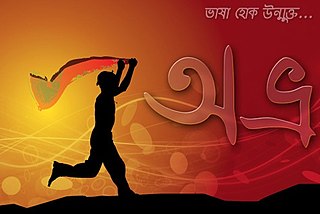
Avro Keyboard is a free and open source graphical keyboard software developed by OmicronLab for the Microsoft Windows, Linux, MacOS, and several other software additionally adapted its phonetic layout for Android and iOS operating system. It is the first free Unicode and ANSI compliant Bengali keyboard interface for Windows that was published on 26 March 2003.

The Information and Communication Technology Agency is the lead agency in Sri Lanka for implementation of information and communications technology (ICT) initiatives by the Government of Sri Lanka. It was established to develop the economy of Sri Lanka through ICT. To this end, it works to improve the country's technological capacity, such as building infrastructure, and the readiness of its people, through education and human resources. It is also active in developing regulations around the use of technology and disseminating information worldwide about Sri Lankan ICT. Its current Chairman is Prof. Malik Ranasinghe.
Keheliya Rambukwella is a Sri Lankan politician, hotelier, film producer and former cabinet minister. He has served in multiple ministerial posts, including the former Minister of Mass Media and Information, Minister of Foreign Employment Promotion and Welfare, Minister of Water Supply and Drainage, Minister of Health and Minister of Environment.

News First or News 1st is a Sri Lankan news organization owned by the Capital Maharajah Organization Ltd. News 1st primarily broadcasts news, live on three TV channels (Sirasa TV, Shakthi TV, TV 1, five radio channels, three websites in Sinhala, English & Tamil languages, and social media platforms.

Rev. Fr. Jacome Gonsalves, CO was an Oratorian priest and missionary in Sri Lanka, then known as Ceylon.
Sinhala numerals, are the units of the numeral system, originating from the Indian subcontinent, used in Sinhala language in modern-day Sri Lanka.
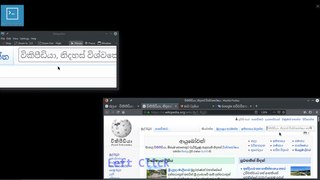
Sinhala input methods are ways of writing the Sinhala language, spoken primarily in Sri Lanka, using a computer. Sinhala input methods can be broadly classified into two main groups: ones based on typewriter keyboard layouts, and ones that are meant to be typed on QWERTY keyboards using an input method, known as "Singlish".

Azhagi is a freeware transliteration tool, which enables its users to type in a number of regional Indian languages, including Tamil, Hindi, and others, using an English keyboard. In 2002, The Hindu dubbed Azhagi as a tool that "stand[s] out" among various similar software "emerg[ing] nearly every other day". Since year 2000, Azhagi has provided support for Tamil transliteration; this was later expanded to nearly 13 Indian languages, featuring 16 total built-in languages as of the day of writing.

The Tamil keyboard is used in computers and mobile devices to input text in the Tamil script.
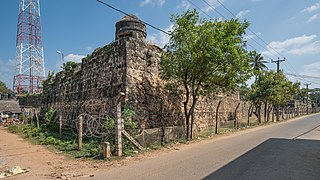
Kalpitiya Fort was built by the Dutch between 1667 and 1676. Kalpitiya was important as it commands the entrance to the adjacent bay, Puttalam Lagoon. The surrounding Puttalam area was one of the major cinnamon cultivation areas in Sri Lanka. The Dutch even constructed a canal from Puttalam via Negombo to Colombo to transport cinnamon from the area.

Madura English–Sinhala Dictionary is a free electronic dictionary service developed by Madura Kulatunga. It is available as computer software, an online website and an android app. The dictionary contains over 230,000 definitions including various technical terms. As of 2016, the dictionary has been downloaded approximately 1,000,000 and ranks 100th most visited sites in Sri Lanka. The dictionary is distributed as freeware. It was initially released on 23 November 2002.
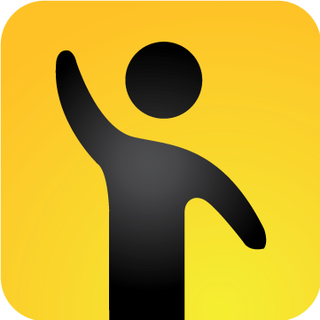
PickMe is a Sri Lankan taxi hailing and delivery app developed by Digital Mobility Solutions (Pvt) Ltd. It launched in June 2015. The app is available in English, Sinhala and Tamil on Android and iOS. By 2021 the company had 8000 registered users. PickMe has access to Bike, Tuk, Flex, Mini, Car (Sedans), Minivan and Luxury (VIP) cars.
References
- ↑ "Trilingual Sinhala-Tamil-English National Web Site of Sri Lanka" . Retrieved 2015-04-19.
- ↑ "Use of Sinhala Unicode in Government - Local Languages" . Retrieved 2015-04-19.
- ↑ "Sri Lanka ICT USE IN EDUCATION" (PDF). Retrieved 2015-04-19.
- ↑ "From the Past to the Present: Evolution of Computing in the Sinhala Language" . Retrieved 2015-04-19.
- ↑ "Siyabasa Sinhala Typing" . Retrieved 2015-04-19.
- ↑ "Origins of Sinhala Text Box and Singlish" . Retrieved 2020-07-07.
- ↑ "Live Interview of Dasith Wijesiriwardena about Sinhala SP". Archived from the original on 2021-12-12. Retrieved 2015-04-19.
- ↑ "ආයුබෝවන් කපුටා ඩොට් කොම් යුනිකොඩ් පිටුව" [Welcome to Kaputa.com Unicode Page] (in Sinhala). Retrieved 2015-04-19.
- ↑ "Iskoola Pota".
- ↑ "Sinhala Unicode Group" . Retrieved 2015-04-19.
- ↑ "Sinhala SP". Archived from the original on 2007-02-05. Retrieved 2007-02-05.
- ↑ "Kaputa UniWriter - Sinhala Unicode at Work" . Retrieved 2015-04-19.
- ↑ "Shilpa Sayura - e-SDI Project" . Retrieved 2015-04-19.
- ↑ "English to Sinhalese Dictionary for Mac OS X Mavericks and Yosemite" . Retrieved 2015-04-19.
- ↑ "Sinhala for iOS - Appstore". appstore.com. Retrieved 2015-09-02.
